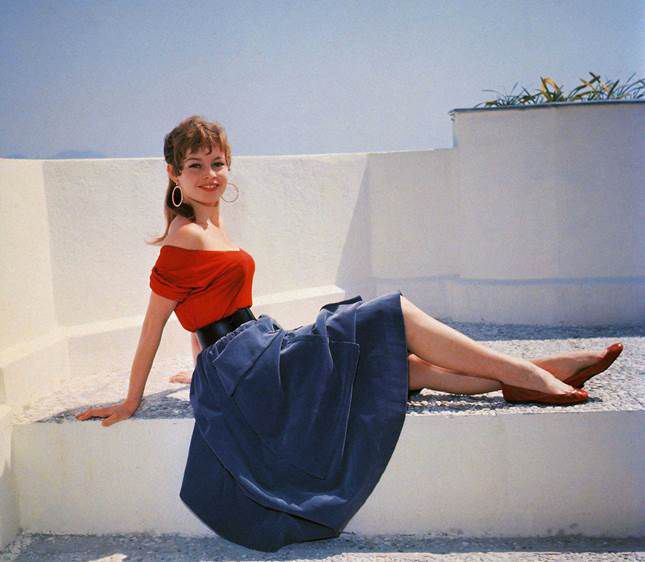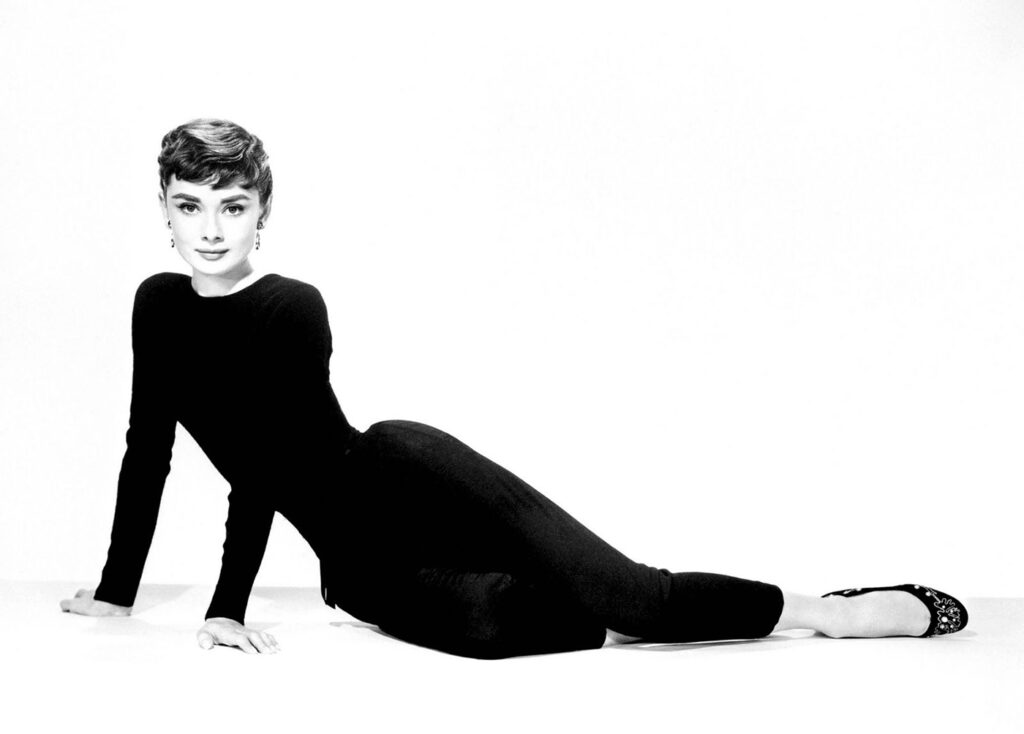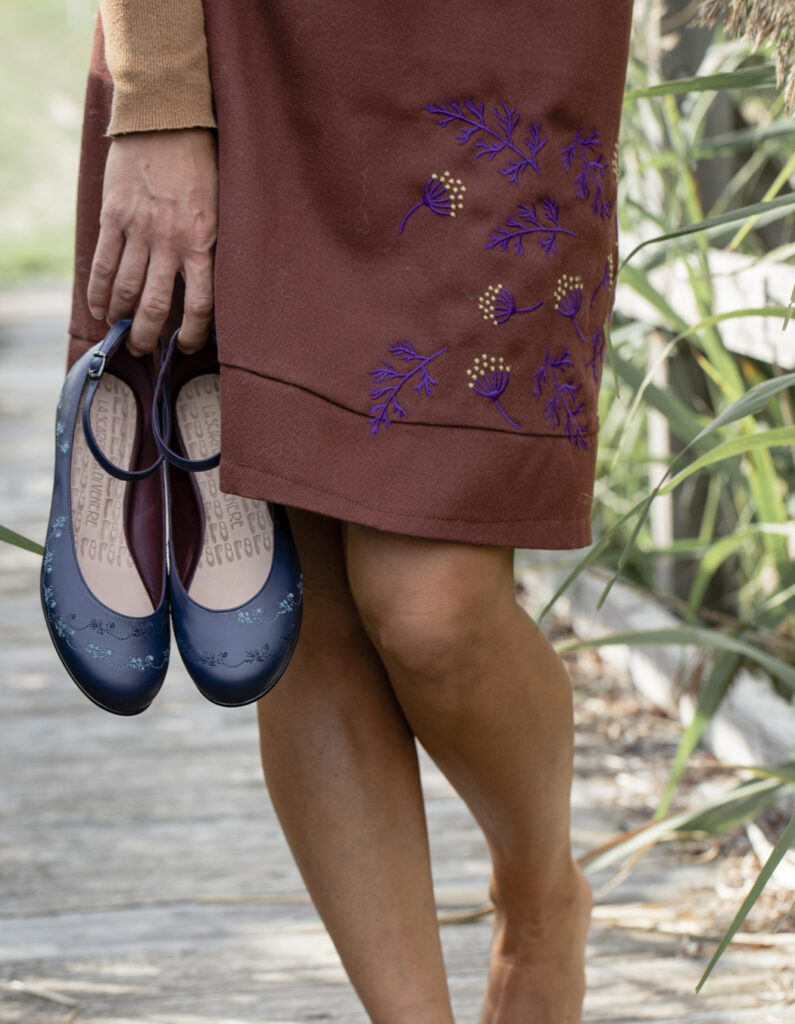Perhaps it is the most debated model in history, especially the recent one it sees males versus females. Men point to them as anti-sex, anti-femininity, anti-sensuality; women love them or hate them, because not everyone feels comfortable with a dancer.
I talk about it in this article, dedicated to a shoe that has won the title of icon of elegance and practicality.

The origins of the dancer
Over the years the most beautiful women have worn them: from Jacqueline Kennedy to Audrey Hepburn, up to the charismatic Brigitte Bardot. To all of them we owe the diffusion of this model in the 1950s, but the origin of this shoe goes back much further.
We are in 1700, the nobles delight with art and dance in the courts of the kings. The idea of dance does not correspond, however, to ours: it is about a dance that takes place on the ground, which does not include evolutions and jumps and which sees the dancers wearing shoes with heels (well yes).
This type of footwear it limited the movementsie the expressive freedom of the dancers, who soon began to search for a solution to follow the evolution of dance. The first dancer who dared to modify her ballet shoes by removing the heel was the Frenchwoman Marie Camargo.
It goes without saying that when French dancers discovered that the novelty was an incredibly comfortable discovery, the flat shoe spread progressively - but not quickly, because it will take two centuries.
From that day on, all the dancers began to change their shoes and clothes, making them lighter so as not to hinder the ever more courageous evolutions.
Madame Repetto's revolution
The first shoemaker to introduce dancers to the market was a Russian: Jacob Bloch, who in the early 1930s, after moving to Australia and then to London, began to make a commissioned dance shoe.
But the real revolution comes from a woman of Italian descent, Rose Repetto, who with his company produced his own dance shoes. Madame Repetto's son was a dancer and we all know how much a mother's heart is sensitive to the requests of a son struggling with a difficulty that we can easily solve.
Rose's son, Roland Petite, was a ballet dancer and choreographer, who asked his mother about more comfortable shoes suited to the needs of dancers: the new dance shoe had to have the flat sole, with reinforcements, so that it could be resistant but, at the same time, low cut on the instep, in order to be flexible and leave full freedom of movement to the dancers.
That was how his mother made it for him the prima ballerinas, which dancers from all over the world will soon fall in love with; it was 1947.
The dancer and the movie stars
Often you become famous by chance but, even more often, success is more than deserved. It happens that a well-known and influential actress of the period had a past as a dancer and, during her artistic evolutions, she had experienced the comfort of the new dance shoes.
Let's talk about Brigitte Bardot, who turned to Madame Repetto to make a shoe especially for her, the Cendrillon, to be worn both during the movie And God created the woman of 1956, both in his spare time.
From this moment on, the dancer is projected into the Olympus of footwear. After Brigitte Bardot, she will also wear them Audrey Hepburn in the movie Cinderella in Paris making them over the years one of the symbols of his style, together with the little black dress, the Capri pants and the “cat's eyes” goggles.

Audrey chooses the dancer patented by Ferragamo and made especially for her in suede and with a rounded tip. The designer conceived the shell sole in 1958, the use of which is then found in a successful series of models, ballet flats, ankle boots, décolleté, even ballet shoes. The inspiration comes from the construction of the Indian opanke, the moccasin of the natives of America, in which the sole rises on the heel and becomes the upper; Ferragamo's shell sole contains the foot and caresses it with its curved and enveloping shape.

From this moment on, every girl will want a pair of ballet flats at his feet. To push them towards success there are many factors: the absolute comfort, the refined elegance, the versatility that allows you to combine them with practically everything, the simplicity of the lines and shapes.
Ballerinas today: how to choose and match them
I have always had a natural propensity for combinations and chromatic harmonies, especially if they are unusual. The ballerina is really the shoe that deserves the least effort to be matched flawlessly. To match them properly I suggest you read the article by Anna Turcato, image consultant and style strategist, dedicated to this topic: he recently talked about it, also mentioning our models!
My advice is: have fun. The ballerina is flawless with trousers, but also with a skirt; with a mini dress or with a longer and wider skirt. It is perfect for bon-ton mini dresses with a French atmosphere, but also for the more casual looks.

The dancers of the Slipper of Venus
I am bound by an unparalleled affection to the dancers. I already told you about it here, when I told my story: the dancer Sabrina was the first model made of the Scarpetta di Venere, the one from which the production and rebirth of our family business started.
I had created them for my degree thesis, in which I had analyzed the costs of a footwear product; I showed up with my tome under my arm, a pair of ballet flats made by me on my feet and another pair that I put there, in plain sight, on the chair of my examiners.
From that moment on, the dancers have followed one another, different colors and shapes, but they can never be missing in my production, they are now part of the family. In addition to Sabrina I realized a few years ago the Milan, pointed and with ankle strap and along the foot, then the Lola, a little ballerina and a little summer sandal, the Sveva, semi-open ballerina, the upper is a clean cut without seams and the Roma, pointed and with a little heel for a true Parisienne look.

This year, however, they have arrived le Ingrid in the collection The Nordic Countries, a real romantic note on the wearer's day. It is a very low-cut ballerina both laterally and at the tip, but which remains firmly in place thanks to the strap. Comfortable and delicate, the harmony of this shoe is enhanced by the sweet embroideries of natural inspiration on the upper.
If you want to discover all the dancers, click here.
And you, what do you think of the dancers? Did you already know their history? Do you wear them often?
I'm curious to know what you think!


